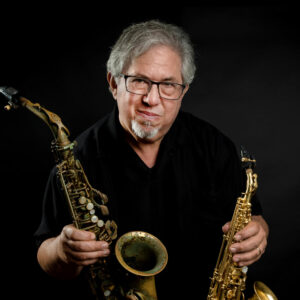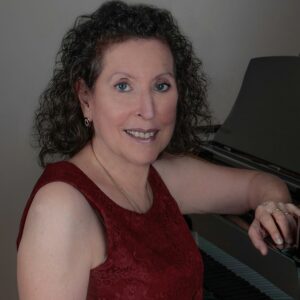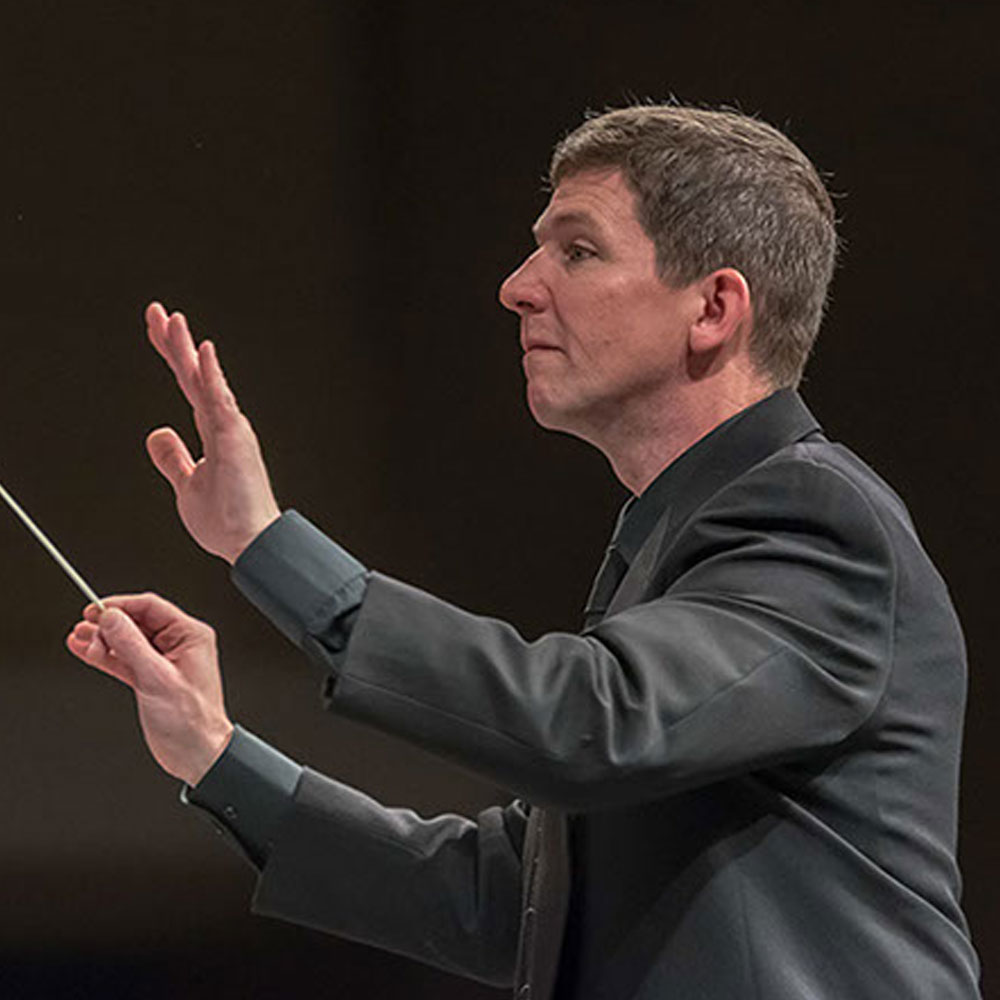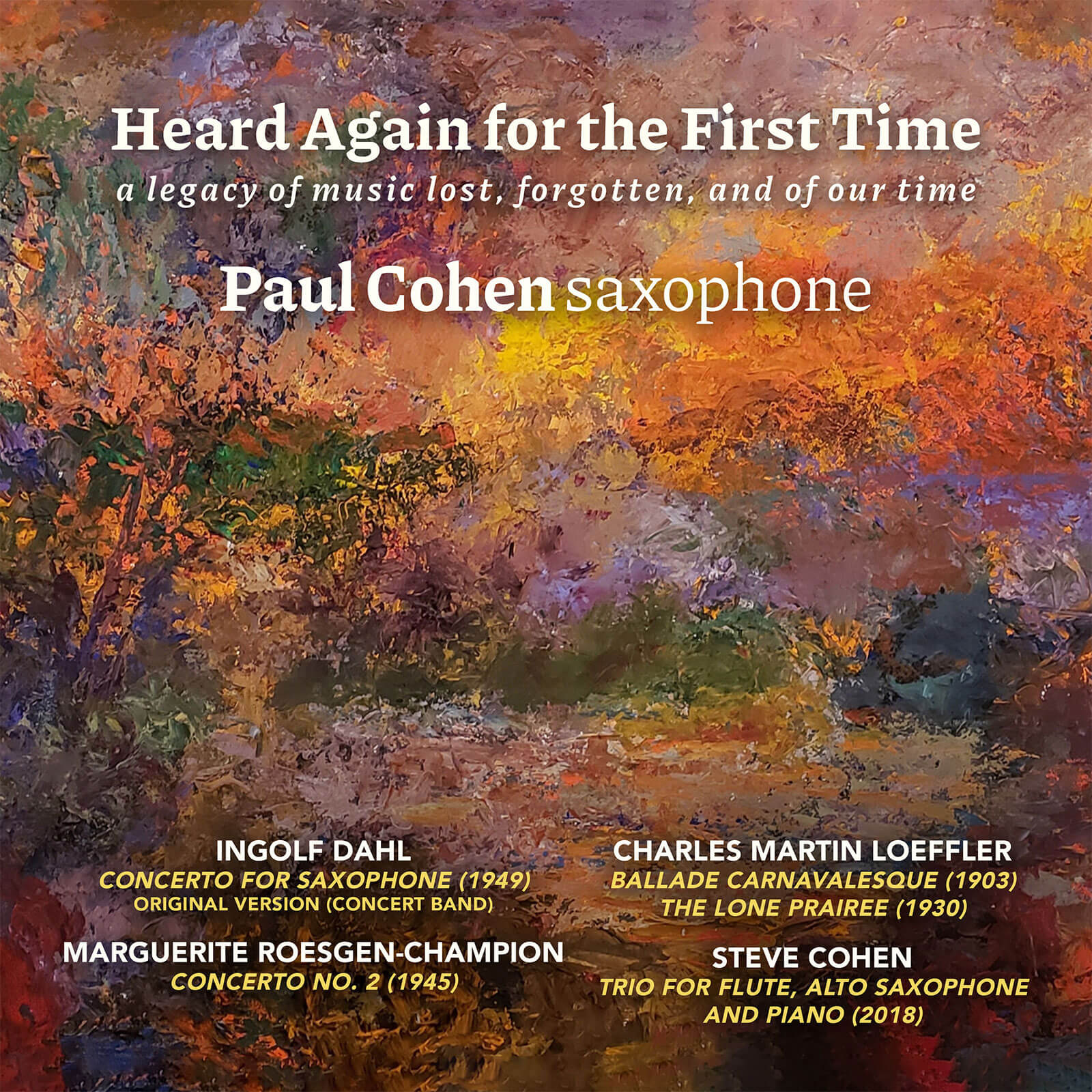Heard Again for the First Time
Paul Cohen saxophone
Ingolf Dahl composer
Marguerite Roesgen-Champion composer
Charles Martin Loeffler composer
Steve Cohen composer
From compelling solo interpretations to dramatic instrumental flourishes, saxophonist Paul Cohen revives original works for saxophone that were lost or unknown for decades. On HEARD AGAIN FOR THE FIRST TIME, Cohen is joined by the Eastern Wind Symphony under Todd Nichols and an impressive roster of soloists who breathe fresh life into this centuries-spanning collection.
The album, with the majestic and expansive original 1949 version of Dahl’s Concerto for Alto Saxophone, long-lost manuscripts of works by Loeffler, Roesgen-Champion’s mid-century impressionism, and Steve Cohen’s contemporary Trio not only reveals a previously unknown depth of saxophone repertoire, but nobly illustrates the saxophone’s role in a multitude of musical styles.
Listen
Stream/Buy
Choose your platform
"Well worth hearing."
Track Listing & Credits
| # | Title | Composer | Performer | |
|---|---|---|---|---|
| 01 | Concerto for Alto Saxophone & Wind Ensemble: I. Recitative - Adagio | Ingolf Dahl | Eastern Wind Symphony | Todd Nichols, conductor; Paul Cohen, alto saxophone | 16:41 |
| 02 | Concerto for Alto Saxophone & Wind Ensemble: II. Rondo | Ingolf Dahl | Eastern Wind Symphony | Todd Nichols, conductor; Paul Cohen, alto saxophone | 10:31 |
| 03 | Concerto No. 2: I. Prelude | Marguerite Roesgen-Champion | Paul Cohen, alto saxophone; Roger Nye, bassoon; Rebecca Cypess, harpsichord | 2:16 |
| 04 | Concerto No. 2: II. Allegro moderato | Marguerite Roesgen-Champion | Paul Cohen, alto saxophone; Roger Nye, bassoon; Rebecca Cypess, harpsichord | 4:29 |
| 05 | Concerto No. 2: III. Intermede | Marguerite Roesgen-Champion | Paul Cohen, alto saxophone; Roger Nye, bassoon; Rebecca Cypess, harpsichord | 1:19 |
| 06 | Concerto No. 2: IV. Final | Marguerite Roesgen-Champion | Paul Cohen, alto saxophone; Roger Nye, bassoon; Rebecca Cypess, harpsichord | 3:17 |
| 07 | Ballade carnavalesque | Charles Martin Loeffler | Kathleen Nester, flute; Lynne Cohen, oboe; Paul Cohen, alto saxophone; Roger Nye, bassoon; Allison Brewster Franzetti, piano | 13:18 |
| 08 | The Lone Prairee | Charles Martin Loeffler | Brett Deubner, viola; Paul Cohen, tenor saxophone; Allison Brewster Franzetti, piano | 3:48 |
| 09 | Trio for Fulte, Alto Saxophone & Piano: I. Andante moderato | Steve Cohen | Kaoru Hinata, flute; Paul Cohen, alto saxophone; Allison Brewster Franzetti, piano | 5:12 |
| 10 | Trio for Fulte, Alto Saxophone & Piano: II. Slow Blues | Steve Cohen | Kaoru Hinata, flute; Paul Cohen, alto saxophone; Allison Brewster Franzetti, piano | 4:59 |
| 11 | Trio for Fulte, Alto Saxophone & Piano: III. Fast Afro-Cuban Feel | Steve Cohen | Kaoru Hinata, flute; Paul Cohen, alto saxophone; Allison Brewster Franzetti, piano | 4:13 |
TRACK 1-2 — Recorded at Bordentown Performing Arts Center in Fieldsboro NJ
Recording Engineer Robert Bullington
Digital editing by David Rosenthal & Kaz Fernando at Sonic Adventures Studio
TRACK 3-6 — Recorded at Nicholas Hall at Rutgers University in NJ
Recording Engineer Loren Stata
TRACK 7 — SOS (Sound on Sound studios) in Montclair NJ
Recording Engineer Ed Kessle
Published by To the Fore Publishers / totheforepublishers.com
TRACK 8 — Trading 8’s Studio in NJ
Recording Engineer Chris Sulit
Published by To the Fore Publishers / totheforepublishers.com
TRACK 9-11 — Recorded at Trading 8’s Studio in NJ
Recording Engineer Chris Sulit
Published by Steve Cohen music / stevecohenmusic.net
EQUIPMENT
Alto saxophone – Selmer Mark VI, Caravan mouthpiece, D’Addario Reserve 3.5
Tenor saxophone – Selmer Mark VI, Caravan mouthpiece, D’Addario Reserve 3 +
Cover art: “Western View“ by Marsha Heller marshahellerart.com
General Manager of Audio & Sessions Jan Košulič
Recording Sessions Director Levi Brown
Audio Director Lucas Paquette
Mastering Shaun Michaud
Executive Producer Bob Lord
Executive A&R Sam Renshaw
A&R Director Brandon MacNeil
VP, Design & Marketing Brett Picknell
Art Director Ryan Harrison
Design Edward A. Fleming
Publicity Patrick Niland, Sara Warner
Artist Information

Paul Cohen
Paul Cohen is a sought-after saxophonist for orchestral and chamber concerts and solo recitals. He has appeared as soloist with the San Francisco Symphony, Richmond Symphony, New Jersey Symphony, Charleston Symphony, and the Philharmonia Virtuosi. His many solo orchestra performances include works by Debussy, Creston, Ibert, Glazunov, Martin, Loeffler, Husa, Dahl, Still, Villa-Lobos, Tomasi, and Cowell. He has also performed with a broad range of orchestras, including the New York Philharmonic, Metropolitan Opera (NYC), American Symphony Orchestra, Cleveland Orchestra, Santa Fe Opera, New Jersey Symphony, Oregon Symphony, San Diego Symphony, Long Island Philharmonic, Group for Contemporary Music, Greenwich Symphony, and New York Solisti.

Allison Brewster Franzetti
The 2014 and 2018 Latin Grammy® Nominee for Best Classical Album and 2008 Grammy® Nominee for Best Instrumental Soloist without Orchestra, pianist Allison Brewster Franzetti has received international acclaim from critics and audiences alike for her stunning virtuosity and musicality, both as a soloist and chamber musician. Her performances include the live Latin Grammy® Awards television broadcast, the Grammy® Awards Classical Music Tribute to Earl Wild and Lang Lang at the Walt Disney Concert Hall in Los Angeles, the American Classical Music Hall of Fame, the Robert Schumann Festival at the Marcella Sembrich Museum in Lake George NY, the Campeche Festival in Mexico, and at the opening of the VI International Festival of Music at the Teatro Colon in Buenos Aires, Argentina.

Todd Nichols
Todd Nichols is the artistic director and conductor of the Eastern Wind Symphony and is Director of University Bands at Rutgers University in New Jersey. He serves as a guest conductor, clinician, adjudicator, and recording producer, and is especially honored to have guest conducted the United States Army Field Band. An advocate for new compositions, Nichols has supported the efforts of composers in over 20 commissions from numerous leading composers.
Rebecca Cypess
Musicologist and historical keyboardist Rebecca Cypess is Associate Dean for Academic Affairs at the Mason Gross School of the Arts, Rutgers University. She is the author of Curious and Modern Inventions: Instrumental Music as Discovery in Galileo’s Italy (2016) and Women and Musical Salons in the Enlightenment (forthcoming, 2022). As a performer, Cypess is a specialist in historical keyboard instruments. In recent years she has performed at Columbia University, Queens College, the Center for Jewish History in New York, the University of Pennsylvania, Temple University, Duke University’s Collection of Historic Instruments, Cornell University’s Forte/Piano Festival, and conferences of the American Musicological Society and the Association for Jewish Studies. Cypess is founder and director of the Raritan Players, which has garnered praise for its recordings exploring the performance practices of women in the eighteenth century. She was the 2018 recipient of the Noah Greenberg Award from the American Musicological Society for contributions to historical performance.
Kaoru Hinata
Kaoru Hinata has performed with the New Jersey Symphony Orchestra, New York City Opera Orchestra, the Orchestra of St. Luke’s, and the Glimmerglass Opera Orchestra, and has been a member of the Civic Orchestra of Chicago. She was the first prize winner of the Lawrence Beauregard Competition in Canada and a prize winner in the Myrna Brown Competition in Texas. She has been featured as soloist with the Symphony of Westchester, the Norfolk Festival Chamber Orchestra, and the New York Choral Society Symphony. A dedicated chamber musician who has premiered works by Christopher Theofanidis, Dan Cooper, and Dan Sonenberg, she has also played for Broadway shows such as Sunset Boulevard. She holds degrees from Yale University and Northwestern University, and her teachers include Ransom Wilson, Walfrid Kujala, and Keith Underwood. Kaoru is on the faculty of the Mason Gross School of the Arts at Rutgers University.
Roger Nye
Roger Nye joined the bassoon section of the New York Philharmonic in September 2005. He is recognized for his versatility as an orchestral bassoonist, having held principal positions with both the Buffalo Philharmonic and the Sydney Symphony. He was also the second bassoonist of the Omaha Symphony for 11 seasons. He has held teaching positions at Augustana College and Sioux Falls College, both in Sioux Falls SD, while serving as the Principal Bassoonist of the South Dakota Symphony.
Kathleen Nester
Kathleen Nester is Solo Piccolo/Assistant Principal Flute of the New Jersey Symphony Orchestra and flutist in the Stamford Symphony Orchestra in Connecticut. Nester is a highly sought-after freelance artist in the NYC metropolitan area and has performed with the New York Philharmonic, New York City Opera, Orchestra of St. Luke’s, Mostly Mozart, Lincoln Center, Caramoor, and Bravo! Vail Music Festivals. She has been featured as a concerto soloist on flute, piccolo, and recorder with the New Jersey Symphony Orchestra, the Stamford Symphony Orchestra, and on tours of Japan with The New York Symphonic Ensemble.
Brett Deubner
Brett Deubner, one of the foremost violists of his generation, is an international soloist and chamber musician who has performed with orchestras on five continents. Deubner has performed with more than 80 orchestras in 11 countries and has made 20 CDs on labels such as Naxos, Centaur, Innova, Navona, and Albany, recording music written for him as well as other new music for viola.
Lynne Cohen
Oboist Lynne Cohen plays both oboe and english horn as a soloist, orchestral player, and commercial artist. In addition to being Principal Oboe of the Riverside Sinfonia and a member of the Bethlehem Bach Orchestra, she had previously served as Principal Oboe of the Palm Beach Symphony, Opera and Ballet. She has performed with many of the orchestras in the New York City area, including the New Jersey Symphony, Orchestra of St. Lukes, Westfield Symphony, Hartford Symphony, Stamford and New York Grand Operas, New York Virtuosi, Queens Symphony, and Brooklyn Philharmonic.
The Eastern Wind Symphony
The Eastern Wind Symphony, founded in the spring of 1996, is a wind ensemble of 65 professional musicians from the New Jersey, New York, and Pennsylvania areas. The EWS has presented performances at Carnegie Hall, John F. Kennedy Center, New Jersey Performing Arts Center, and Patriots Theater at the War Memorial. The EWS has also performed at The Midwest Clinic, Northeast Horn Conference, Association for Concert Bands National Convention, International Trumpet Guild Conference, and multiple NaFME Eastern Division Conferences.

